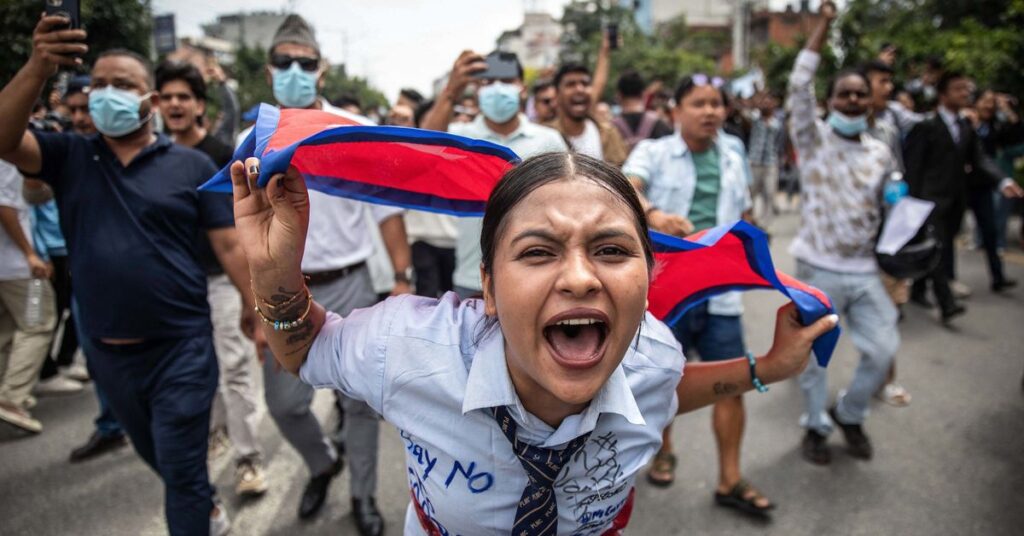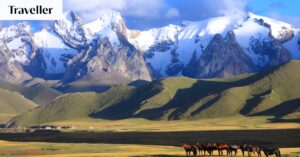
Nepal’s Prime Minister KP Sharma Oli has resigned following a wave of deadly protests led by Generation Z, triggered by a government-imposed social media ban. The unrest, which has resulted in more than 22 deaths and hundreds of injuries, underscores deep-seated frustrations over corruption and economic stagnation in the Himalayan nation.
Security forces responded to the protests with live ammunition, water cannons, and tear gas across several cities, as reported by Reuters. Dr. Mohan Regmi, Executive Director at Civil Service Hospital in Kathmandu, confirmed to CNN that at least 22 people have died amid the turmoil.
The Roots of Discontent
Nepal, a country of approximately 30 million people, has a history of political instability, having seen over a dozen governments since transitioning to a republic in 2008. The current unrest, led by young people aged 13 to 28, is the most significant in decades.
The protests erupted in response to a government ban on social media platforms, including Facebook, Instagram, WhatsApp, YouTube, and X, which was criticized by rights groups. The government justified the ban as a measure against fake news and hate speech, threatening to block any unregistered social media companies. By last Thursday, 26 platforms were inaccessible, according to local reports.
However, the demonstrations also reflect broader generational grievances over limited economic opportunities. The World Bank reports a youth unemployment rate of 20.8% for those aged 15-24 in Nepal. A viral online movement against “Nepo Kids”—privileged children of politicians flaunting their wealth—has further fueled the protests by highlighting socio-economic disparities.
“All the Nepali citizens are fed up with corruption. Every youth is going outside the country. So, we want to protect our youth and make the country’s economy better,” a protester told Reuters.
Violence and International Reactions
The protests turned violent as demonstrators clashed with police at the parliament complex in Kathmandu, leading to the firing of rubber bullets and tear gas. Protesters, many in school or college uniforms, retaliated by setting an ambulance on fire and throwing objects at riot police.
Hospital authorities reported that over 400 individuals, including security personnel, were hospitalized due to injuries. The UN human rights office expressed shock over the deaths, calling for a transparent investigation. Amnesty International condemned the use of lethal force against non-threatening protesters, labeling it a grave violation of international law.
“The use of lethal force against protesters not posing an imminent threat of death or serious injury is a grave violation of international law,” Amnesty International stated.
Political Fallout and Future Prospects
Prime Minister Oli’s resignation follows a series of other high-profile resignations, including the Home Minister and ministers for agriculture, water, and health. The Nepali Army has called for dialogue and restraint to prevent further loss of life and property.
Binay Mishra, a public policy analyst based in Nepal, explained to CNN that with no party holding a clear majority, an interim government might be formed, potentially involving Gen Z organizations in leadership discussions.
“Once the prime minister steps down, the president calls the parliament to form the government,” Mishra noted.
Despite stepping down, Oli expressed in a prior statement that his government was not opposed to the demands of Generation Z, blaming the violence on infiltration by vested interest groups. Gagan Thapa, General Secretary of the Nepali Congress, criticized the government’s handling of the situation and urged his party to withdraw from the coalition.
The editorial board of Nepal’s largest newspaper echoed this sentiment, arguing that Oli could not remain in office following the bloodshed.
Looking Ahead
The resignation of Nepal’s prime minister marks a pivotal moment in the country’s political landscape. As the nation grapples with the aftermath of the protests, the focus now shifts to forming a new government capable of addressing the grievances of its young population and steering the country towards stability and growth.
With the social media ban lifted and dialogue encouraged by both national and international voices, the coming days will be crucial in determining whether Nepal can navigate this crisis peacefully and constructively.






